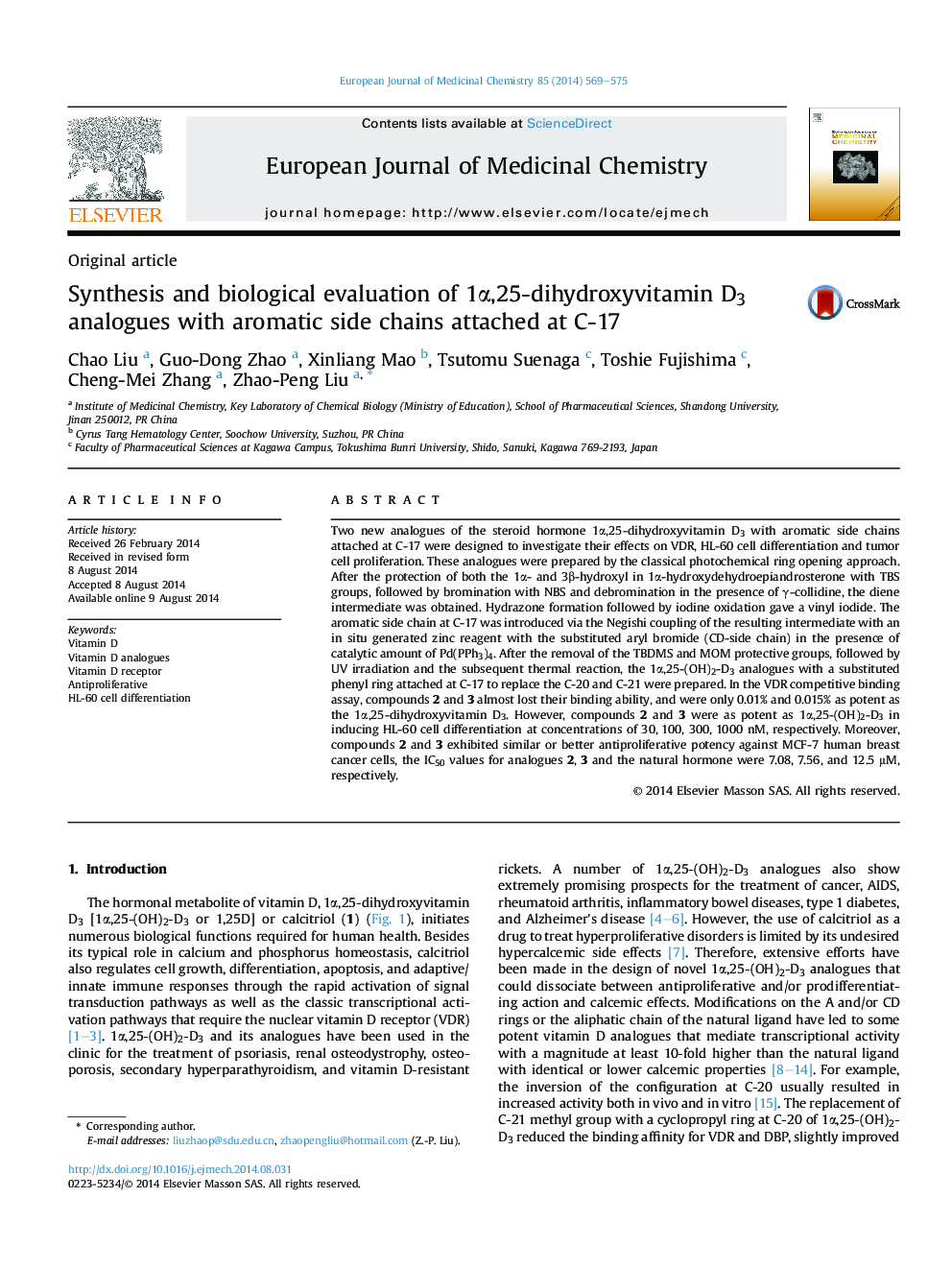| کد مقاله | کد نشریه | سال انتشار | مقاله انگلیسی | نسخه تمام متن |
|---|---|---|---|---|
| 1392348 | 1501131 | 2014 | 7 صفحه PDF | دانلود رایگان |

• Two new vitamin D analogues with a phenyl ring attached at C-17 to replace the C-20 and C-21 were prepared.
• This modification led to almost a loss of VDR binding ability.
• The two analogues maintained their antiproliferative activity.
• The two analogues maintained their prodifferentiating potency.
Two new analogues of the steroid hormone 1α,25-dihydroxyvitamin D3 with aromatic side chains attached at C-17 were designed to investigate their effects on VDR, HL-60 cell differentiation and tumor cell proliferation. These analogues were prepared by the classical photochemical ring opening approach. After the protection of both the 1α- and 3β-hydroxyl in 1α-hydroxydehydroepiandrosterone with TBS groups, followed by bromination with NBS and debromination in the presence of γ-collidine, the diene intermediate was obtained. Hydrazone formation followed by iodine oxidation gave a vinyl iodide. The aromatic side chain at C-17 was introduced via the Negishi coupling of the resulting intermediate with an in situ generated zinc reagent with the substituted aryl bromide (CD-side chain) in the presence of catalytic amount of Pd(PPh3)4. After the removal of the TBDMS and MOM protective groups, followed by UV irradiation and the subsequent thermal reaction, the 1α,25-(OH)2-D3 analogues with a substituted phenyl ring attached at C-17 to replace the C-20 and C-21 were prepared. In the VDR competitive binding assay, compounds 2 and 3 almost lost their binding ability, and were only 0.01% and 0.015% as potent as the 1α,25-dihydroxyvitamin D3. However, compounds 2 and 3 were as potent as 1α,25-(OH)2-D3 in inducing HL-60 cell differentiation at concentrations of 30, 100, 300, 1000 nM, respectively. Moreover, compounds 2 and 3 exhibited similar or better antiproliferative potency against MCF-7 human breast cancer cells, the IC50 values for analogues 2, 3 and the natural hormone were 7.08, 7.56, and 12.5 μM, respectively.
Incorporating a phenyl ring at C-17 made the 1α,25-(OH)2-D3 analogues 2 and 3 almost lose their VDR binding ability, but maintain their antiproliferative and prodifferentiating potency.Figure optionsDownload as PowerPoint slide
Journal: European Journal of Medicinal Chemistry - Volume 85, 6 October 2014, Pages 569–575